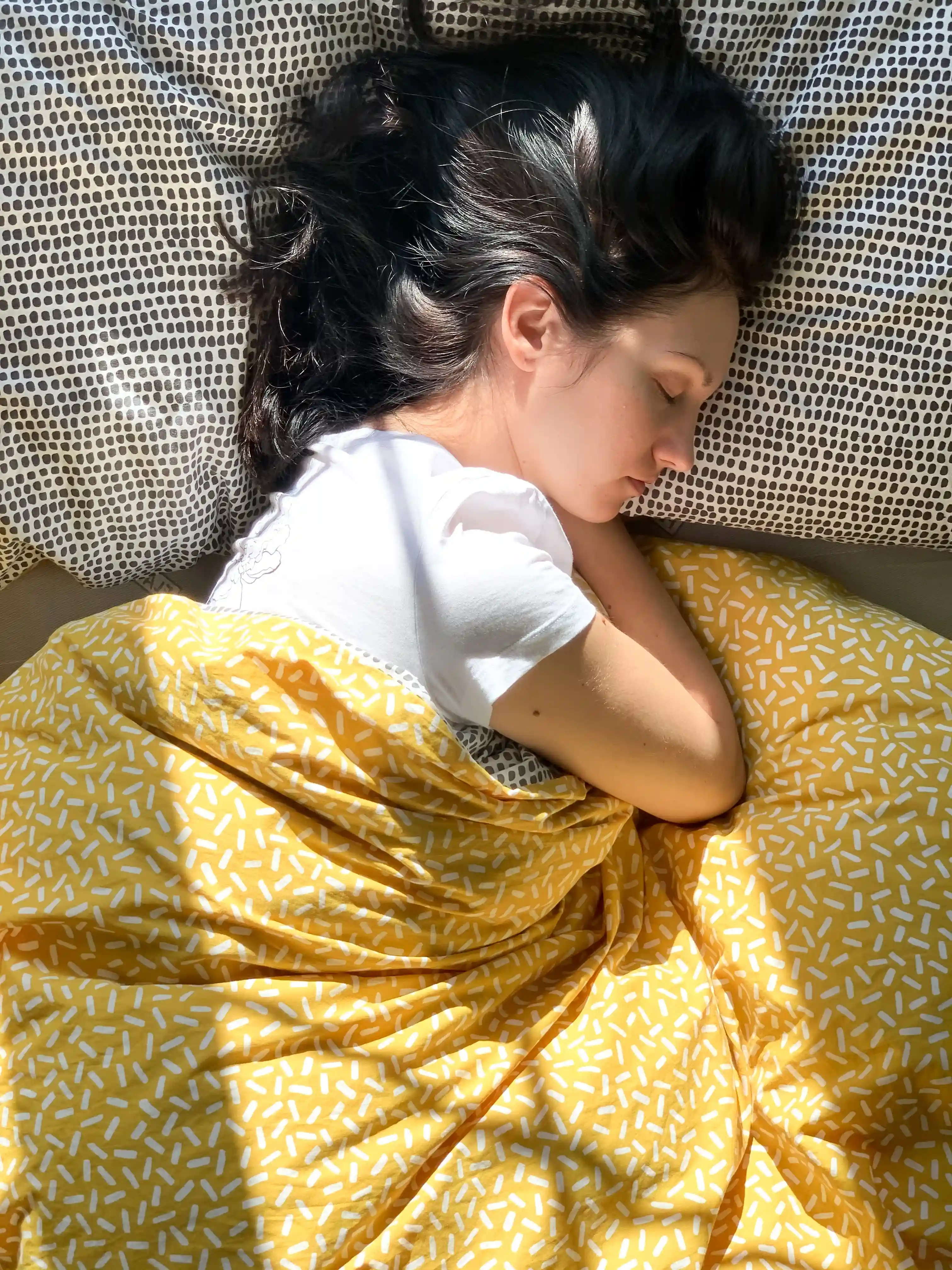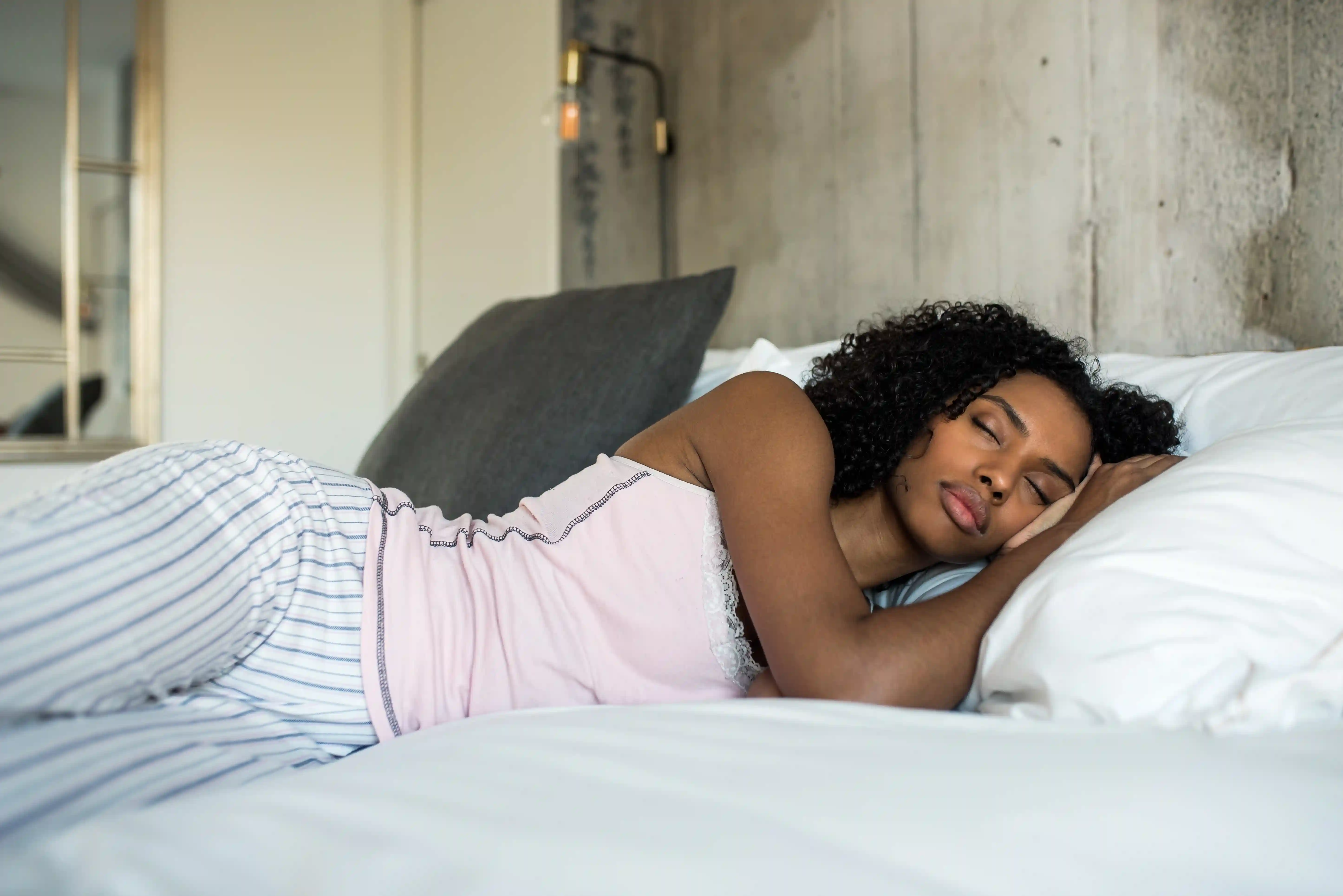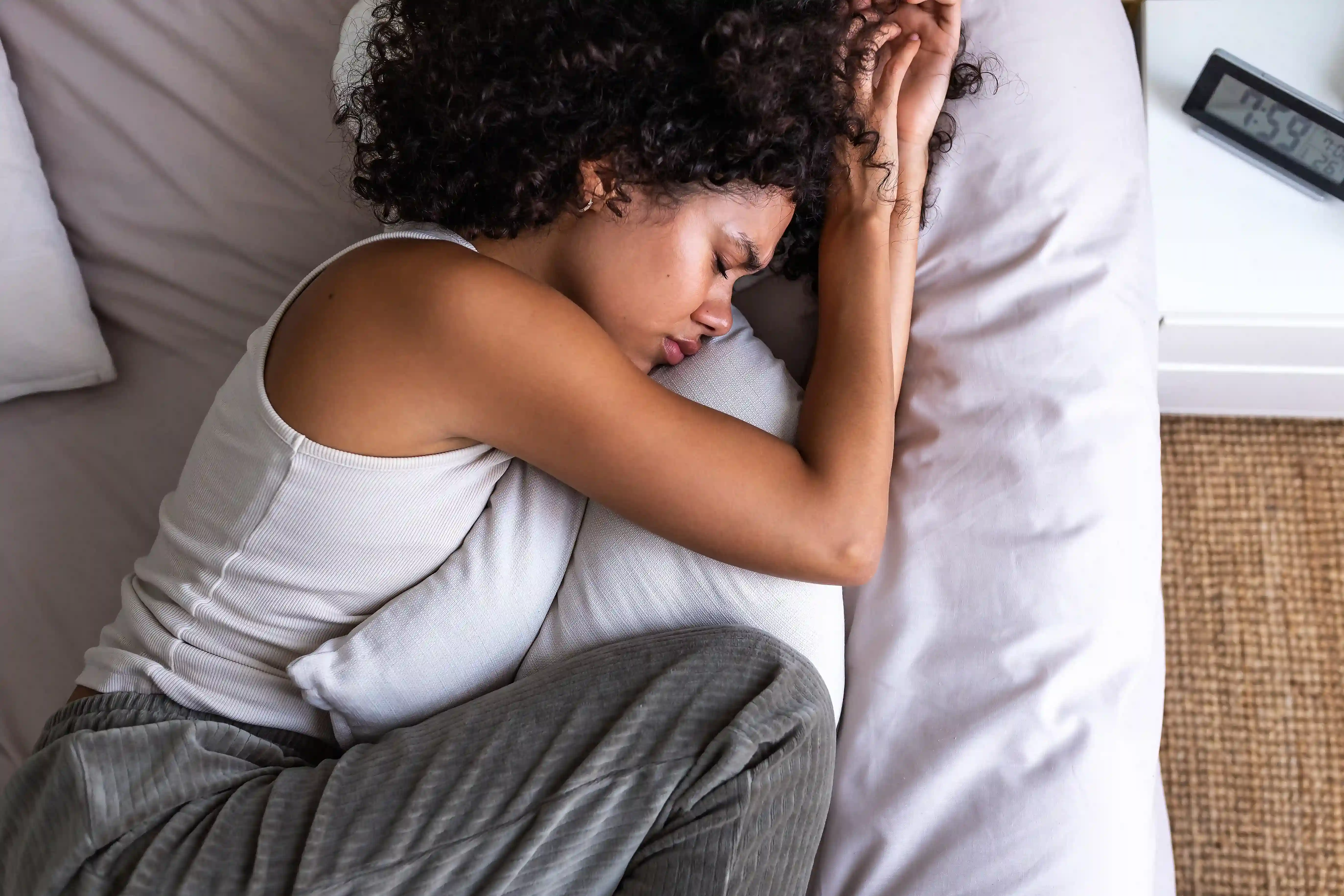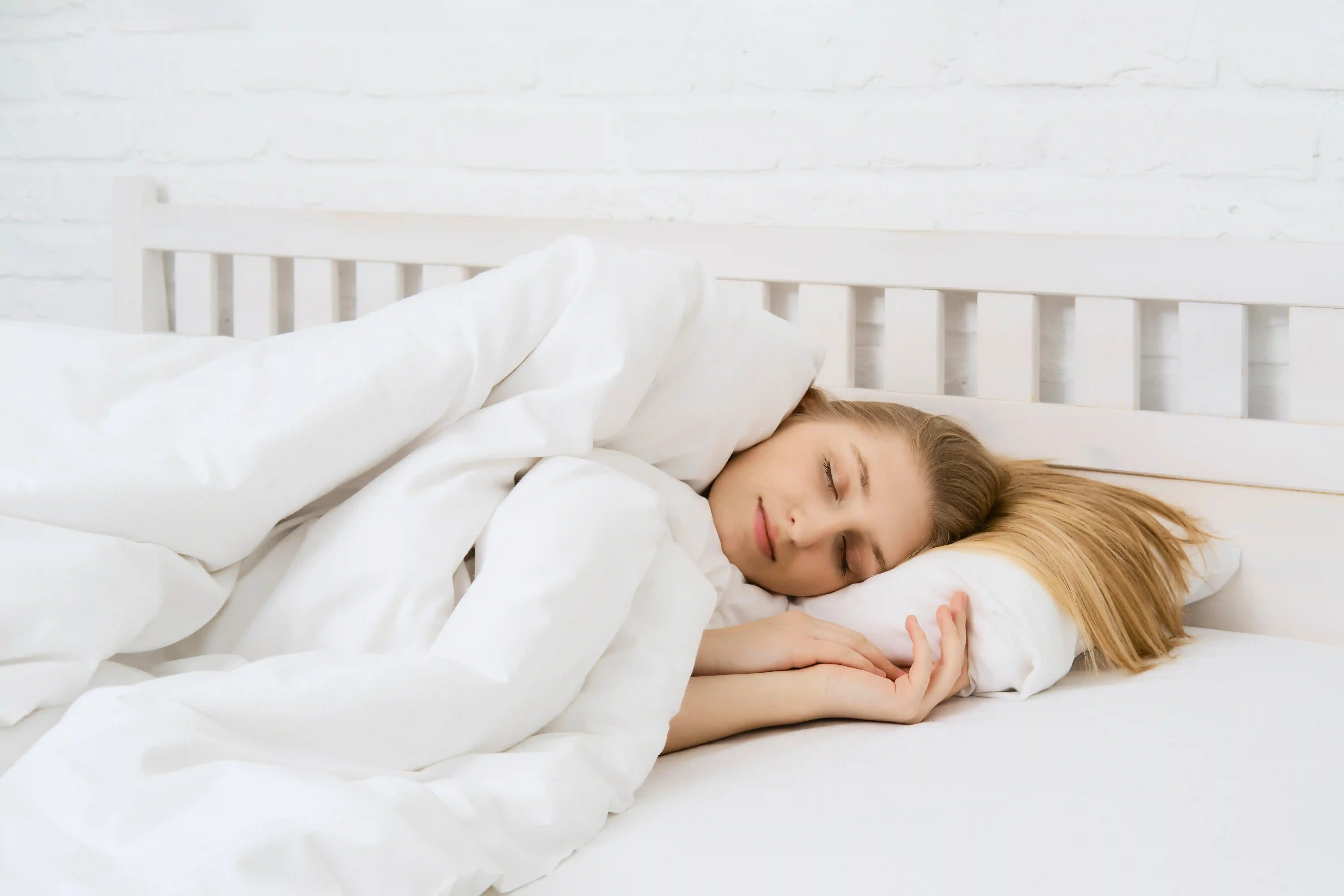fSince the most popular sleeping position is side sleeping, it's no surprise that it offers several benefits that can improve your sleep, such as relieving back pain and reducing snoring. However, adapting to any new sleeping position takes time and effort, so be patient and persistent if you decide to make the switch.
Benefits of Sleeping On Your Side
Back Pain Relief:
Many people suffer from persistent pain, particularly in their lower back. Sleeping in an improper posture, such as on your stomach, can put a strain on your spine and cause pain when you wake up. People who sleep on their sides, on the other hand, report less back discomfort.
Reduced Snoring:
People snore more when sleeping on their backs rather than on their sides. When you sleep on your back, your tongue is more likely to slip back into your throat, causing an obstruction that can lead to snoring.
Improved Digestion:
Your body posture impacts how well your digestive system works, and lying on your back does not allow gas to leave your system as rapidly. People who suffer from heartburn, constipation, bloating, or other gastrointestinal difficulties may benefit from sleeping on their side, and for better sleep, choosing a mattress for side sleeping can drastically enhance your rest.
Improved Brain Health:
Side sleeping aids in the removal of toxins from the brain and may even reduce the chance of neurological disease. It also aids in the removal of waste products, including those in the brain, and it lessens the chances of dementia.

Disadvantages of side sleeping
Shoulder Pain and Hip Pain:
Long-term side sleeping can place additional strain on your hips, lower back, and the shoulder you sleep on. If your spine isn't positioned correctly, sleeping on your side may also result in lower back pain. But not all mattresses cause this type of discomfort, if you invest in a good side sleeper mattress, you can consider SONU Sleep System. Also, if you are looking for a mattress specifically for hip pain, you check out our Best Mattresses for Hip Pain Relief.
Neck Tension:
Shoulder and neck discomfort can be brought on by or made worse by side sleeping. To prevent awakening with pains in their bodies, side sleepers must be mindful of how their neck and shoulders are positioned.
Skin Stress:
One side of your face is pressed into your pillow for a prolonged period while you sleep on your side. Your skin may get stressed or pressured as a result, leading to wrinkles or acne.

Which Side Is Best to Sleep On?
Sleeping on your left side is regarded to be the healthiest. Still, any side can help with sleep apnea and persistent lower back discomfort.
You are not required to stay with one side throughout the night. Start on your left side and notice how your body responds. It's also usual to move from side to side or even onto your back when sleeping. It is important to note that sleeping on your stomach is the most damaging to your spine and organs, so avoid it if at all possible.
Tips for Correct Side Sleeping

Sleep in a Symmetrical Side Sleeping Position:
Supporting the natural curve of your spine from head to hips helps reduce morning aches and pains. All you have to do is lie on your side, head on the pillow, and check that your chin and neck are positioned in the center of your shoulders and that your shoulders are parallel to your hips.
Keep your head forward so that your chin does not drop on your neck or twist to the side.
Maintain an alignment of your arms and hands, either by your sides or slightly in front of you.
Consider putting a small pillow between your knees to ease the strain on your hips and keep your knees from falling on top of each other.
Get a Pillow Designed for Side Sleepers:
If you sleep on your back or stomach, your pillow is probably not supportive enough. Side sleepers require firm pillows that help raise the neck and maintain a neutral spine posture.
The most suitable pillow for side sleepers is one that promotes optimal alignment of your neck and spine, we recommend trying the SONU Top Pillow Deluxe.
To avoid pressure or neck pain as you wake up, keep your neck aligned with your upper back.
Take the distance between your neck and the outer border of your shoulder and when looking for pillows, that dimension should be near the height of the pillow.
Add a Mattress Designed for Side Sleepers:
Soft mattresses can allow heavier areas of your body, such as your hips or shoulders, to sink too deeply into the mattress. Your spine may stretch out of position, causing you to wake up with aches and pains.
Firm mattresses, on the other hand, do not provide enough cushioning for these pressure spots when resting on your side. Your abdomen may sink in to fill this gap, causing pain and spinal misalignment.
For side sleepers, medium-firm mattresses usually balance contouring. They provide enough padding for your body's heavier components to sink deeper into the mattress while remaining firm enough to prevent them from sinking too deeply and creating spinal pain. SONU Sleep System offers the optimum comfort for side sleepers as it supports the body and gives the body the best spinal alignment because of its firmness level.
Who Should Sleep on Their Left Side?
Pregnant Women:
Sleeping on the left side is advised for pregnant women. Sleeping on this side increases blood flow to the heart, fetus, uterus, and kidneys while relieving strain on the liver.
If you get uncomfortable, doctors recommend sleeping on your right side for a brief period rather than on your back.
People who Snore:
When you sleep on your back, your nasal airways tend to constrict, causing you to snore. Sleeping on your left side can help expand your airways naturally and make breathing easier. Although sleeping on your right side may provide comfort, physicians say sleeping on your left side is more effective. It is also the preferred sleeping posture for persons who suffer from sleep apnea.
People with High Blood Pressure:
Because blood arteries are positioned on the right side of the body, some experts believe that sleeping on the left side of the body will reduce pressure and aid those who suffer from high blood pressure.
People with Digestive Issues:
When you sleep on your back, the gas takes a long time to escape your system. If you frequently have bloating, constipation, or stomach problems, consider sleeping on your left side. Gravity can assist waste movement from the small intestine to the large intestine while in this position.
Who Should Sleep on Their Right Side?
Those who Suffer from Heart Failure:
Sleeping on the right side can benefit people who suffer from heart failure. Sleepers in this position may experience less strain on their hearts, as it assists in normalizing blood pressure and heart rate.
FAQs
What are the benefits of side sleeping?
Whichever side you choose to sleep on, there are some health advantages. Sleeping on your side may benefit brain health by allowing wastes to be distributed throughout the brain and then removed by your body. Additionally, it can lessen neck and lower back discomfort by maintaining the posture of your spine.
Which side is better to sleep on?
It's believed that sleeping on your left side is the healthiest position. Nevertheless, for sleep apnea and chronic lower back pain, either side can be helpful.
It's also common to roll over onto your back or to alternate between sides as you sleep. Avoid sleeping on your stomach if at all possible, as it is the most harmful position for your spine and internal organs.
If I'm pregnant, which side should I sleep on?
Pregnant patients are often advised to sleep on their left side by doctors. Prior research has associated lying on one's back or one’s side with an increased risk of stillbirth, stunted fetal growth, low birth weight, and preeclampsia, a mother's potentially fatal high blood pressure condition.
When to Consider a Different Sleeping Position?
Because you usually enjoy what you like, changing your sleeping posture is not always simple. But, your sleeping posture may be to blame if you're suffering from joint discomfort, sleep apnea, or neck pain. This indicates that it's time to give teaching your body to sleep in a different method some serious thought. If you want to read more about other sleeping positions, you can check out this article.
Conclusion
Sleeping on your back has long been suggested for getting a good night's sleep without waking up in pain. However, there are more advantages to sleeping on your side than previously believed, which you can only reap if you get into the proper posture.
Jessica H.
Jessica is a reviewer, writer, and sleep enthusiast at Sleepiverse. Jessica graduated with her master's degree in Nursing research and education. She is a registered nurse and currently works in the Intensive Care Unit. Since becoming a nurse, Jessica has worked the night shift, which means a disrupted sleep schedule. Knowing she needed to function at her best while caring for patients at night, she spent a lot of time researching how to sleep well with a difficult schedule.


